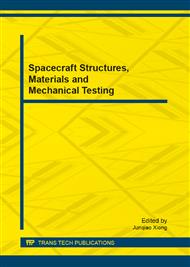p.3
p.9
p.15
p.21
p.25
p.31
p.41
p.47
Study on High-Cycle Fatigue Property of Q500q Bridge Steel
Abstract:
The fatigue limit and S-N curve of Q500q bridge steel were obtained by high-cycle fatigue test. The experimental results show that the fatigue limit of the experimental steel is 552.5MPa at room temperature with stress ratio R=0.1.There are some differences from the traditional fatigue fracture of high-cycle fatigue, the experimental steel’s rapid propagation area shows the morphology feature of both plastic fracture and brittle fracture. From analyzing the fatigue facture, the morphology feature of plastic fracture is mainly caused by the high fatigue limit. The little size (2~4μm) of inclusions in the experimental steel and the acicular ferrite’s microstructure feature of sub-lath structure with high-density dislocation reduce the crack initiation. And that’s the main reason why the steel has such high fatigue limit.
Info:
Periodical:
Pages:
9-14
Citation:
Online since:
February 2013
Authors:
Price:
Сopyright:
© 2013 Trans Tech Publications Ltd. All Rights Reserved
Share:
Citation:


